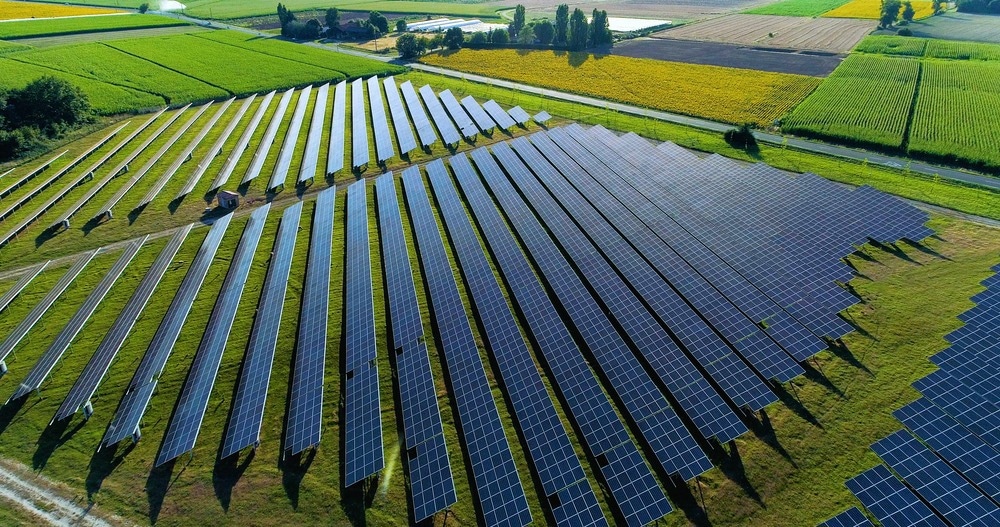A team at the University of Geneva (UNIGE) has generated projections for the expansion of renewable energy at the local level. Their findings indicate that Switzerland will need to intensify its endeavors to attain zero net carbon emissions by 2050.
 The research team tested its model on the 2148 municipalities in Switzerland. Image Credit: Fly_and_Dive
The research team tested its model on the 2148 municipalities in Switzerland. Image Credit: Fly_and_Dive
To guarantee the effectiveness of an energy policy in meeting its goals, researchers and public authorities can employ computer models of differing precision levels. Nevertheless, these models come with several constraints, one of which is their limited efficacy in producing forecasts at a regional scale.
A team at the University of Geneva (UNIGE) has developed a comprehensive model to simulate adopting three green technologies in Swiss municipalities by 2050. This super-model is constructed using available statistical data and amalgamates 12 existing technology growth models while assessing their applicability. The findings, presented in the journal PNAS Nexus, can potentially guide policy decisions.
Computer modeling plays a crucial role in the transition to sustainable energy. These models create simulations of real-world scenarios, allowing scientists and government authorities to assess the long-term impacts of strategies to mitigate climate change. They are instrumental in simulating potential transformations in energy production, storage, and consumption infrastructure within specific regions.
As numerous countries, Switzerland included, target carbon neutrality by 2050, the demand for dependable projection tools has risen substantially. Nevertheless, the existing models used for informing political choices come with their own set of limitations.
They often fail to consider uncertainty adequately, potentially fostering unwarranted confidence. Furthermore, their spatial resolution is insufficient for facilitating local-level decision-making. Lastly, these models can exhibit notable variations in their projections even for the same geographical area.
Projecting On a Local Scale
In response to these challenges, a team at the University of Geneva (UNIGE) has introduced a novel "probabilistic" model, supported by the Swiss Federal Office of Energy's SWEET program and executed by the SURE consortium.
Unlike deterministic models that provide a singular definitive forecast, this probabilistic model generates projections that encompass a spectrum of probabilities linked to various potential future scenarios. Moreover, it can assist in determining which existing model is the most applicable for a specific municipality or region.
This model has been designed to generate projections for the municipal-scale distribution of three specific energy technologies: photovoltaics, heat pumps and battery electric vehicles. It is fed by the data available for each municipality and combines twelve existing models, while at the same time testing them.
Nik Zielonka, Study First Author and PhD Student, Renewable Energy Systems Group, Institute of Environmental Sciences, University of Geneva
Tested in All Swiss Municipalities
To validate their model, the researchers selected Switzerland, with its 2148 municipalities, due to the availability of precise and accessible local data on adopting energy technologies.
Utilizing data from 2000 to 2021, the team harnessed the power of a supercomputer to create projections for the advancement of these technologies up to 2050. These outcomes empower each municipality to assess the disparity between the projected future and their sustainability objectives.
Researchers conducted this analysis specifically in Thun, which has a population of 43,000 and where the energy goals are well-defined. Thun aims to reach carbon neutrality by 2050, with plans for a photovoltaic energy capacity exceeding 120 MW (currently less than 20 MW) and introducing approximately 12,000 electric vehicles (currently fewer than 500) by that year.
However, based on the UNIGE model's projections, if Thun continues its current trajectory, it is more likely to achieve only 90 MW of photovoltaic capacity and fewer than 8,000 electric vehicles by 2050.
The 2050 Horizon is Unrealistic
If we look at our results as a whole, it seems highly unlikely that Switzerland will achieve zero net carbon emissions by 2050, without further changes in policy, at least when it comes to the needed levels of solar photovoltaic, heat pumps, and electric vehicles. Switzerland will have to step up its efforts and the recent ‘Mantelerlass’ is the first step in the right direction.
Evelina Trutnevyte, Head, Renewable Energy Systems Group, Institute of Environmental Sciences
Evelina Trutnevyte, who led this research, is also an Associate Professor in the Section of Earth and Environmental Sciences at the UNIGE’s Faculty of Science.
The projections derived from this study are readily accessible to the public and are regularly updated with the latest data. The next phase for the research team involves expanding this model to encompass additional European countries. This expansion will also encompass incorporating a wider array of energy technologies into the model, along with an amalgamation of more existing models to enhance its accuracy and comprehensiveness.
Journal Reference:
Zielonka, N., et al. (2023). Probabilistic projections of granular energy technology diffusion at subnational level. PNAS Nexus. doi.org/10.1093/pnasnexus/pgad321.